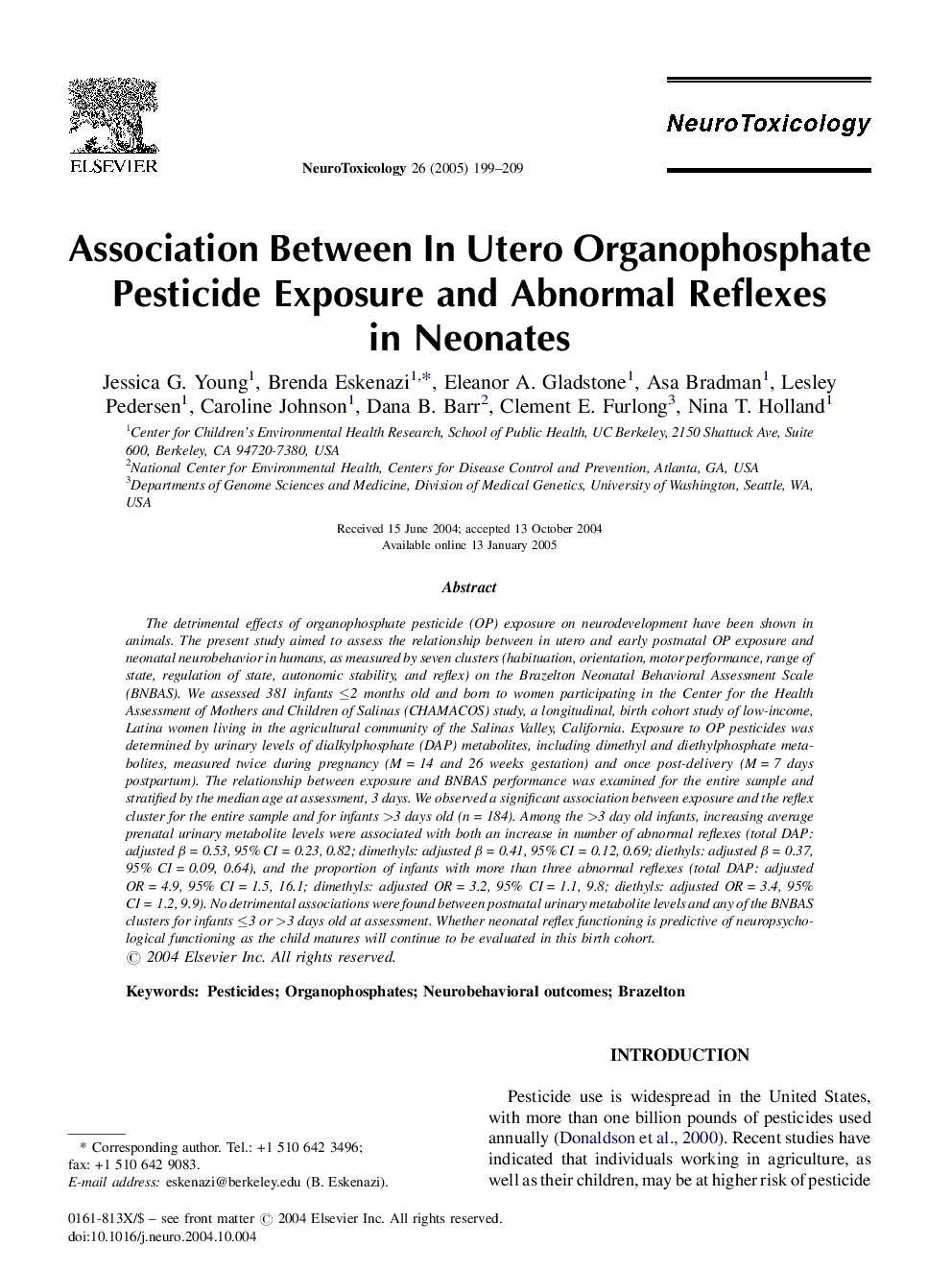| Article ID | Journal | Published Year | Pages | File Type |
|---|---|---|---|---|
| 9032364 | NeuroToxicology | 2005 | 11 Pages |
Abstract
The relationship between exposure and BNBAS performance was examined for the entire sample and stratified by the median age at assessment, 3 days. We observed a significant association between exposure and the reflex cluster for the entire sample and for infants >3 days old (n = 184). Among the >3 day old infants, increasing average prenatal urinary metabolite levels were associated with both an increase in number of abnormal reflexes (total DAP: adjusted β = 0.53, 95% CI = 0.23, 0.82; dimethyls: adjusted β = 0.41, 95% CI = 0.12, 0.69; diethyls: adjusted β = 0.37, 95% CI = 0.09, 0.64), and the proportion of infants with more than three abnormal reflexes (total DAP: adjusted OR = 4.9, 95% CI = 1.5, 16.1; dimethyls: adjusted OR = 3.2, 95% CI = 1.1, 9.8; diethyls: adjusted OR = 3.4, 95% CI = 1.2, 9.9). No detrimental associations were found between postnatal urinary metabolite levels and any of the BNBAS clusters for infants â¤3 or >3 days old at assessment. Whether neonatal reflex functioning is predictive of neuropsychological functioning as the child matures will continue to be evaluated in this birth cohort.
Keywords
Related Topics
Life Sciences
Environmental Science
Health, Toxicology and Mutagenesis
Authors
Jessica G. Young, Brenda Eskenazi, Eleanor A. Gladstone, Asa Bradman, Lesley Pedersen, Caroline Johnson, Dana B. Barr, Clement E. Furlong, Nina T. Holland,
